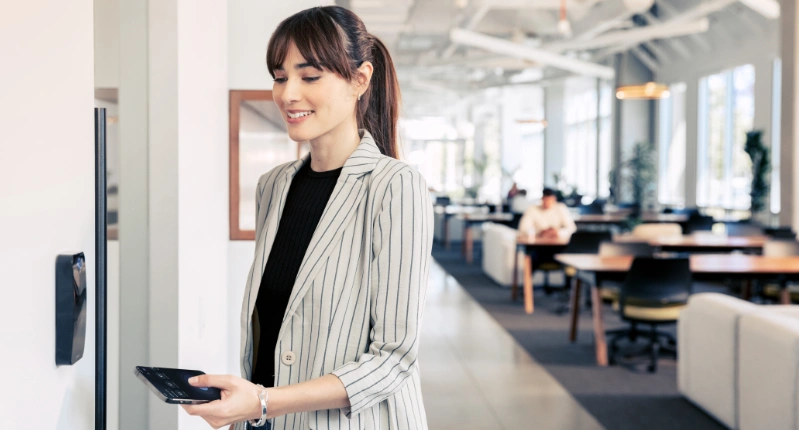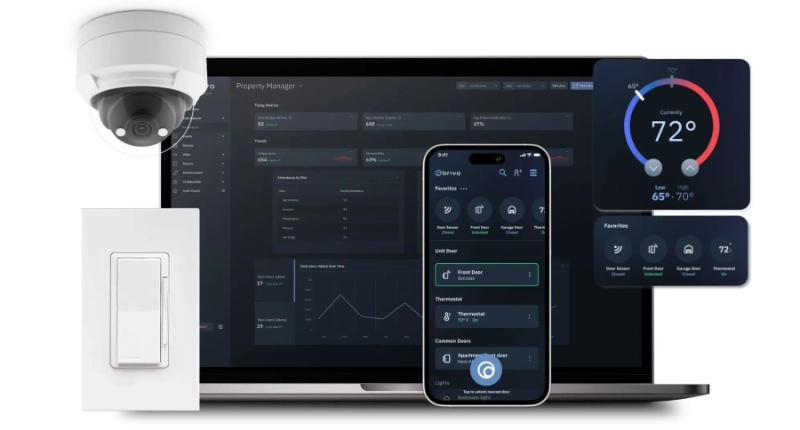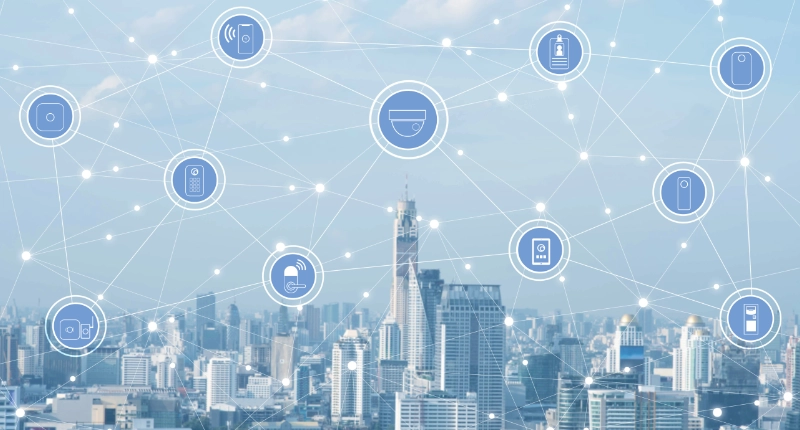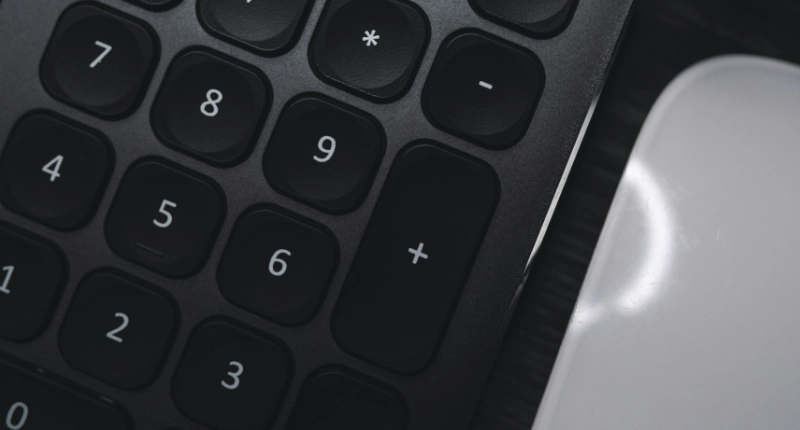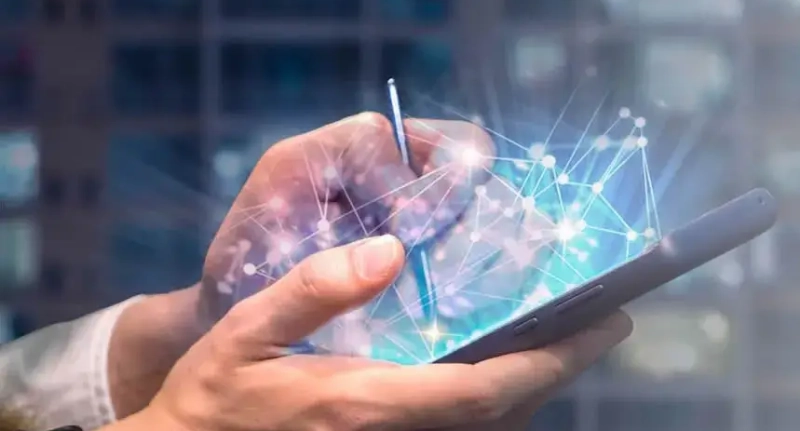Brivo recently had the opportunity to sit down with Tracey Hawkins, “The Safety Lady,” and get her views on the state of safety and security in commercial real estate.
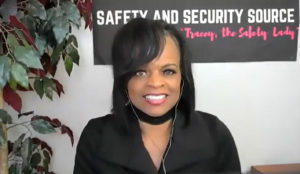 Tracey Hawkins, Founder of Safety and Security Source, LLC.
Tracey Hawkins, Founder of Safety and Security Source, LLC.
Tracey has worked in the real estate industry for 34 years, gaining experience as a real estate agent, housing provider/landlord, and investor. Currently the founder of Safety and Security Source, LLC, she is passionate about advancing property safety and security education as a writer and resource for industry publications, a professional speaker/trainer, retailer of products, such as pepper spray and alarms, leveraging a national network of subject matter experts, and curating a series of virtual safety events.
First and foremost, Tracey shared with us that her passion for safety and security in commercial real estate comes from a long history of working in real estate. During her time as a real estate agent, Tracey found that sales were not for her. Additionally, she shared that real estate agents, property managers, and leasing brokers have to be concerned about safety and protection these days. Meetings with total strangers at vacant premises are part of their daily business activities, potentially exposing them to a significant danger.
“Real estate sales and leasing is considered a high-risk, hazardous occupation by the U.S. Department of Labor. That says everything. That is why I do what I do,” states Tracey, “Someone had to step in and give them the tools that they needed to remove some of the risks from the jobs that they do.”
That’s where she found her calling. “I wanted to do something unique and work in the industry in a capacity that no one else was filling. I started locally here in Kansas City, Missouri, going from office to office with my safety programs. That soon snowballed, I am now a nationally recognized real estate safety expert.”
Based on her knowledge and expertise, we asked Tracey to share what she sees as the top issues real estate agents, property managers, builders, and buyers/sellers should know about security. She shared insights into three key topics: Knowledge gaps, investments in technology, and adding value to the bottom line.
1. Knowledge Gap – Property professionals are super busy, particularly after last year. Tracey finds herself educating not only on property safety and security techniques but technology and services as well, “They don’t have time to do research as well as to do their homework and find out what they need to implement.”
2. Investing for Technology – Can technology replace real estate agents? “Real estate agents will not be replaced by technology, but those who embrace it will outperform those who do not” is an industry quote that she likes. The same is true; according to Tracey, in the multifamily and property management environments, “Properties that invest in technology for security will soon outpace the ones that don’t invest in updating their security practices.”
3. Bottom Line – How much will this cost me? Working with property owners can be challenging as they are focused on their bottom line. It takes time to persuade them into making an initial investment in technology and other security-related changes. A keyless lock, for example, can easily be overlooked as a simple improvement and requires time “explaining to them that it will make their lives easier, make the buildings more secure and lower their costs in the long run.”
We asked how forward-thinking organizations are building their case for security technology investment. Tracey shared that property professionals should consider three factors to understand the effect their investment can have on the business and the bottom line. Those factors are:
1. Public Perception – When property owners keep their properties and security practices up to date, they build trust and confidence with people who want to live there. “Tenants will feel more secure if they know that the property owner has invested in security-related technology,” confirms Tracey.
2. Insurance – Everyone is concerned about their financial situation. Owners who demonstrate they are doing everything possible to protect the property, its contents, and the people inside, “will see insurance costs go down,” Tracey stresses.
3. Liability – “Liability is a big deal.” Investing in technology, property and tenant safety, and best practices for security reduces the property owner’s liability should someone get injured or something more traumatic occurs. “If the property owner can say, this is what I did to keep you safe, here’s the security-related technology that I implemented. That will help prevail in a court hearing or case.”
Change is nothing new in the real estate industry. Despite having to navigate public health orders and social distancing requirements, people are still buying, selling, and renting homes.
Tracey highlights a few trends in real estate protection that she has observed:
Property professionals are clamoring for ways to function without physically being on-site, even though it is often necessary. Tracey explains, “there are ways to implement technology where they can limit their contact and limit having to access the property.”
While many real estate companies have suspended home showings, demand for digital or virtual showings is rising but not without risk. “Electronic showings have some aspects of fraud that are built-in if they’re not careful,” Tracey points out as the primary trend most are unaware of. “Technology is good, but you still have to implement safe practices.”
Tracey continues by sharing the most often asked questions she receives as a real estate safety and security expert.
“The most important question is, “What can we do?” explains Tracey. With people mainly working from remote and home, smart home technology, including video doorbells, electronic locks, and cameras, are widely accepted and implemented. “What a lot of property owners don’t realize is that the same technology transfers over to multifamily, as well as a rental property.”
Commercial real estate and property managers have long relied on Crime Prevention Through Environmental Design (CPTED) principles for reducing crimes at their properties. Its premise focuses on how the physical environment can influence the safety and security of a property and its inhabitants. Tracey notes that CPTED principles are not only used to transform and secure existing properties, but are being integrated into new construction at no additional cost.
“CPETD is a big deal,” says Tracey. “These practices, including territoriality, natural surveillance, and community cohesion, can be enhanced by implementing a more integrated approach”, she explains, “You’re not only talking about how to physically secure a space, building, house, or multifamily property. You’re talking about how to implement technology with it for a better result.”
Real estate and property management involve various risks which can be mitigated with a solid plan. With the proper security and safety strategies combined with investing upfront in technology, you can avoid many property owners’ troubles, reduce liability, decrease crime, and increase retention. If your current approach to property safety and security needs assessing and a professional plan, connect with “Tracey, the Safety Lady” Hawkins at linkedin.com/in/traceythesafetylady/.
Click here for more resources on smart technology for multifamily properties


